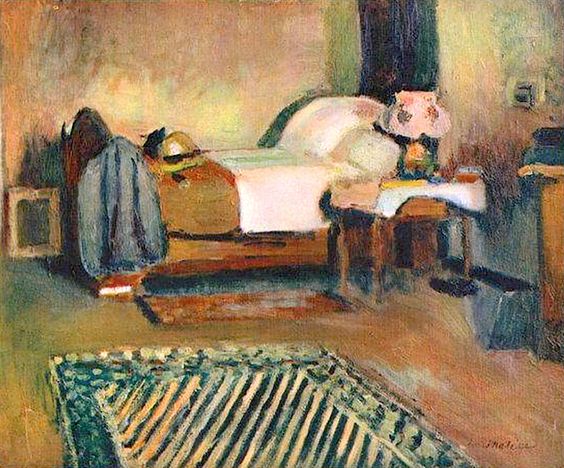Description
Henri Matisse, one of the most influential artists of the 20th century, offers us in "My Room in Ajaccio" an intimate window into his life and surroundings during his early years as a painter. This work, created in 1898, when Matisse had not yet fully embraced Fauvism, reflects a moment of transition and exploration in his artistic career.
When observing "My Room in Ajaccio," the first thing that strikes is the rigorously ordered composition of the room. The interior space is meticulously represented, with clear and defined lines that mark the boundaries of the objects. A portrait of great precision that makes one think of the academic studies that Matisse had undertaken at the École des Beaux-Arts. Here, we can see the influence of his masters and his rigor in the treatment of perspective and details.
The use of color in this painting also deserves special attention. Unlike his later Fauvist works, which explode in a burst of vibrant and contrasting colors, "My Room in Ajaccio" presents a more sober and controlled palette. Earthy and muted tones predominate, suggesting a serene and contemplative atmosphere. Pastel colors harmoniously combine, creating a sense of calm and rest. This chromatic choice can be considered a reflection of the young Matisse's mood, perhaps more introspective and measured at this early stage of his career.
The absence of human figures in the composition is notable, giving inanimate objects their own identity and an almost palpable presence. The bed, the desk, the chair, and other elements of the furniture, although modest in their representation, take on a singular prominence. Each object seems to tell a story, offering a silent narrative of the artist's daily life.
One of the most interesting aspects of this work is how Matisse manages to convey a sense of life and movement in an apparently static space. Through the arrangement of objects and the play of light and shadows, the artist manages to create a dynamic atmosphere within the stillness of the room. This duality between the static and the dynamic is a characteristic that Matisse would develop and perfect in his later works.
The window, which allows a partial view of the outside, functions as a link between the intimate interior and the broader world beyond the room's walls. The light that enters through the window delicately bathes the space, creating reflections and nuances that add a layer of depth and realism to the scene. This interaction of light and shadow plays a crucial role in the composition of the work, a testament to Matisse's meticulous study of lighting effects in his early years.
Although "My Room in Ajaccio" may seem like a modest work compared to Matisse's more well-known pieces, it carries within itself the seeds of the genius that would revolutionize modern art. It is a piece that speaks more of a Matisse in evolution, a young artist seeking and shaping his unique voice. Through this introspective and detailed look at his private surroundings, we can capture the beginnings of an artistic journey that would redefine the art world of the 20th century.

